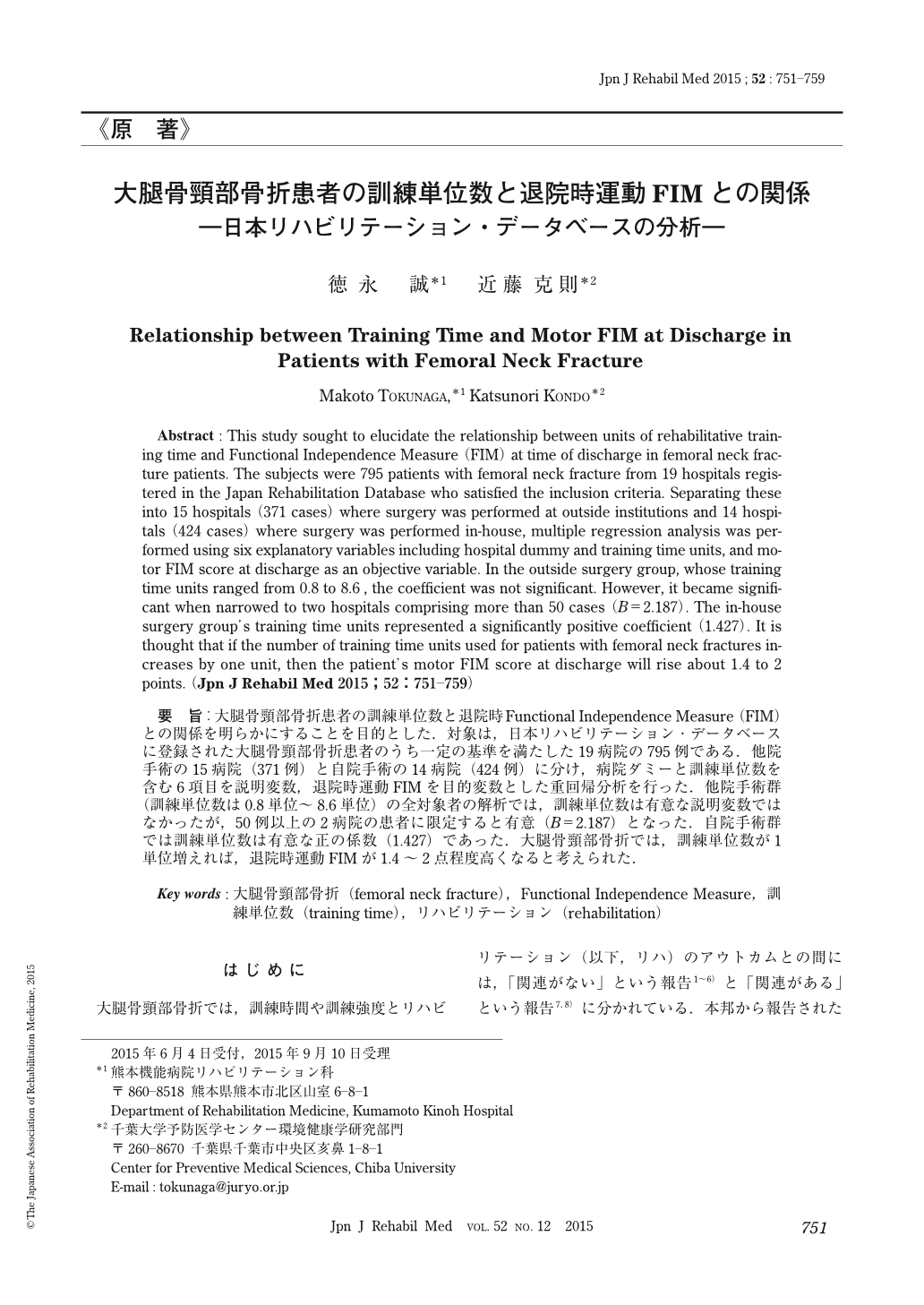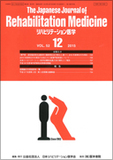Japanese
English
- 販売していません
- Abstract 文献概要
- 1ページ目 Look Inside
- 参考文献 Reference
要旨:大腿骨頸部骨折患者の訓練単位数と退院時Functional Independence Measure(FIM)との関係を明らかにすることを目的とした.対象は,日本リハビリテーション・データベースに登録された大腿骨頸部骨折患者のうち一定の基準を満たした19病院の795例である.他院手術の15病院(371例)と自院手術の14病院(424例)に分け,病院ダミーと訓練単位数を含む6項目を説明変数,退院時運動FIMを目的変数とした重回帰分析を行った.他院手術群(訓練単位数は0.8単位〜8.6単位)の全対象者の解析では,訓練単位数は有意な説明変数ではなかったが,50例以上の2病院の患者に限定すると有意(B=2.187)となった.自院手術群では訓練単位数は有意な正の係数(1.427)であった.大腿骨頸部骨折では,訓練単位数が1単位増えれば,退院時運動FIMが1.4〜2点程度高くなると考えられた.
Abstract : This study sought to elucidate the relationship between units of rehabilitative training time and Functional Independence Measure (FIM) at time of discharge in femoral neck fracture patients. The subjects were 795 patients with femoral neck fracture from 19 hospitals registered in the Japan Rehabilitation Database who satisfied the inclusion criteria. Separating these into 15 hospitals (371 cases) where surgery was performed at outside institutions and 14 hospitals (424 cases) where surgery was performed in-house, multiple regression analysis was performed using six explanatory variables including hospital dummy and training time units, and motor FIM score at discharge as an objective variable. In the outside surgery group, whose training time units ranged from 0.8 to 8.6, the coefficient was not significant. However, it became significant when narrowed to two hospitals comprising more than 50 cases (B=2.187). The in-house surgery group's training time units represented a significantly positive coefficient (1.427). It is thought that if the number of training time units used for patients with femoral neck fractures increases by one unit, then the patient's motor FIM score at discharge will rise about 1.4 to 2 points.

Copyright © 2015, The Japanese Association of Rehabilitation Medicine. All rights reserved.


